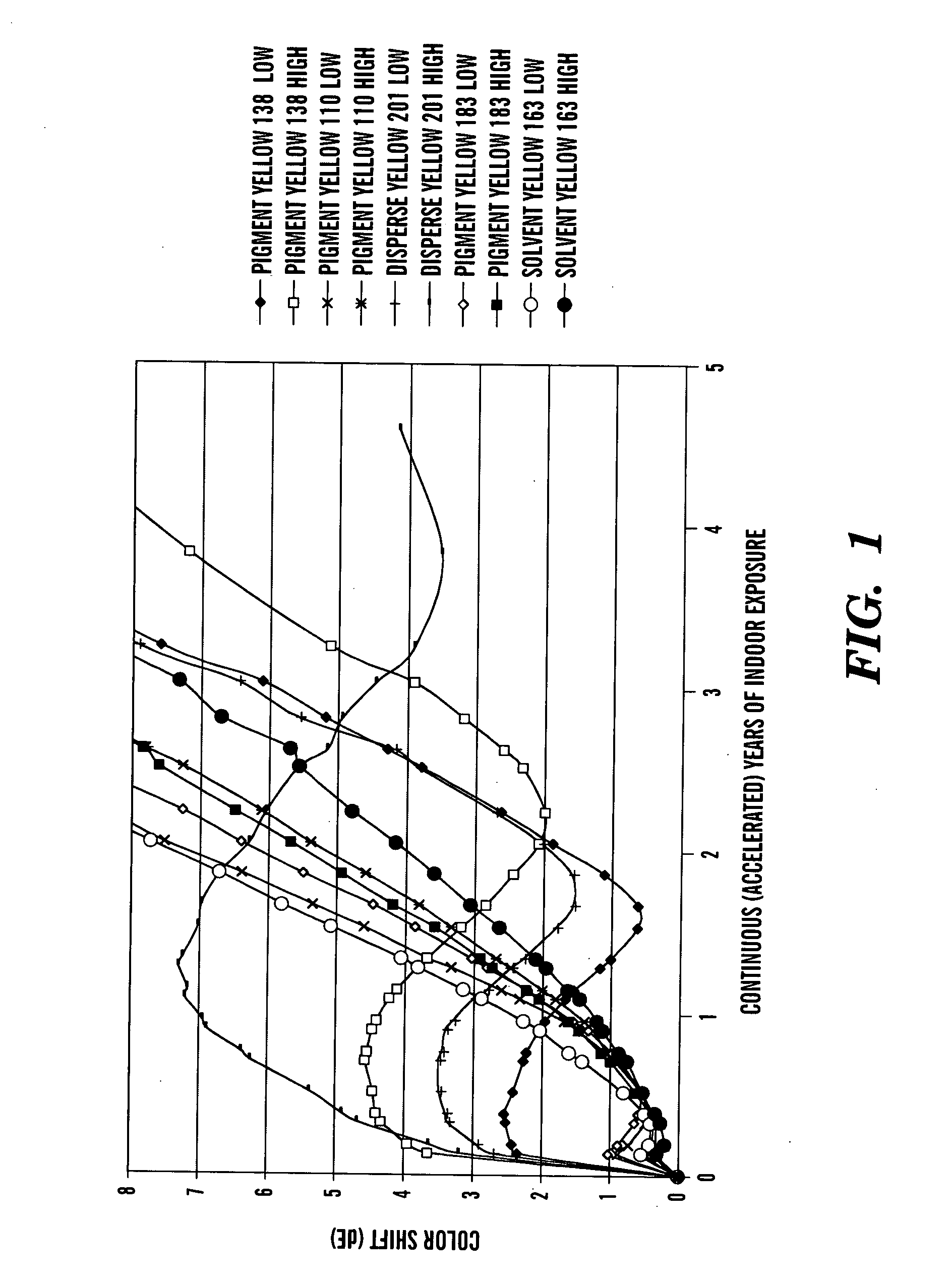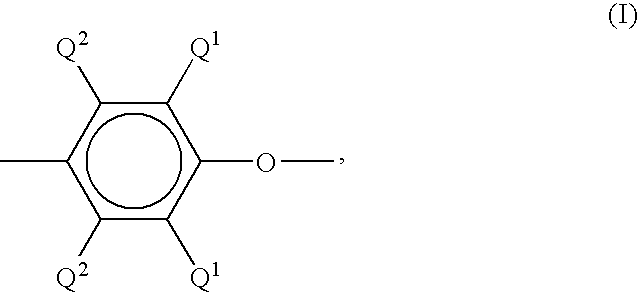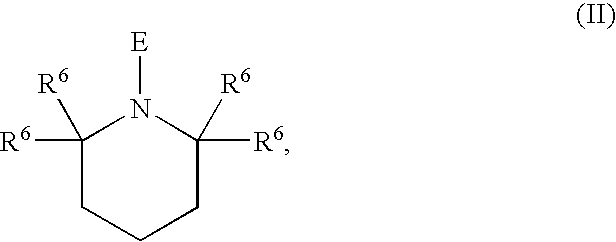Poly(arylene ether) compositions with improved ultraviolet light stability, and related articles
a technology of poly(arylene ether) and compositions, applied in the field of polymer compositions, can solve the problems of affecting the quality of poly(arylene ether) resins, the color of business equipment formulated in lighter colors, e.g., whites, lighter blues, lighter grays, etc., and the effect of increasing the cost of additives
- Summary
- Abstract
- Description
- Claims
- Application Information
AI Technical Summary
Benefits of technology
Problems solved by technology
Method used
Image
Examples
example 1
[0072] The following materials were used in this example:
TABLE 1Component(a)AmountDescriptionPoly(arylene50-55pbw(b)Poly(2,6-dimethyl-1,4-ether)phenylene) ether resinhaving an intrinsicviscosity, in chloroform at25° C., of about 0.4 dl / g.High Impact50-55pbwCommercially-available,Polystyrenerubber-modified(HIPS)polystyrene with a meltflow index (MFI) of about3 grams / 10 minutes at 200°C. and 5 kilograms.Flame13pbwKronitex ®50, anretardant / isopropylated triphenylplasticizersphosphate compound.TiO2Variable -Titanium DioxideSee Below(c)
(a)Each of the compositions additionally contained less than 3 pbw of various additives (heat stabilizers, mold release agents, etc.)
(b)pbw = parts by weight, based on 100 parts resin
(c)TiO2 concentrations were: 0 pbw; 3 pbw; 6 pbw; and 10 pbw, based on total weight of poly(arylene ether) and HIPS.
[0073] Each of the compositions was prepared by pre-blending the ingredients at ambient temperature, using a mixer, and then extruding the pre-blend through...
example 2
[0080] Each of the poly(arylene ether) resin samples listed below had an identical base composition, as follows(a):
PPE resin*48.64pbwHigh Impact Polystyrene (HIPS)**48.64pbwHALS Tinuvin ® 7700.5pbwBenzotriazole UV Absorber***1.0pbwTitanium Dioxide (TiO2)3.0pbw
*Poly(2,6-dimethyl-1,4-phenylene) ether resin having an intrinsic viscosity, in chloroform at 25° C., of about 0.4 dl / g.
**“HIPS: A rubber-modified alkenyl aromatic resin having a polybutadiene content of about 7.5-9 weight %.
***Cyasorb 5411 (2-(2-hydroxy-5-t-octylphenyl)-benzotriazole), from Cytec Industries, Inc.
[0081] (a) The resin samples also contained less than 2 pbw of various additives (heat stabilizers, mold release agents, etc.)
[0082] The respective samples each contained a particular type of yellow colorant, as shown in Table 3. Samples 5 and 6 (Disperse Yellow 201) were the only samples which contained a methine-based colorant. The samples were prepared according to conventional techniques similar to those used...
example 3
[0085] Polyphenylene ether compositions with various yellow colorants were also tested for long-term UV stability, using the light test designed to simulate indoor fluorescent lighting, i.e., as in Example 1. The base formula for the PPE compositions was identical to that of Example 2. In each of these samples, one of a set of yellow colorants was added, at either the 0.01 pbw level or the 0.03 pbw level (based on 100 parts of PPE and HIPS). The samples were prepared as in the previous examples, i.e., pre-blending of the ingredients, followed by extrusion at about 540° F.-580° F. (282° C.-304′ C). The extrudate was then injection-molded into 2 inch×3 inch (5.1 cm×7.6 cm) test plaques.
[0086] Delta E measurements were made on the test plaques every 2-7 days (continuous exposure), using the calibrated spectrophotometer mentioned previously. The plaques were read by the spectrophotometer, using the untextured side of the plaque. The results for representative samples are displayed grap...
PUM
| Property | Measurement | Unit |
|---|---|---|
| glass transition temperature | aaaaa | aaaaa |
| weight % | aaaaa | aaaaa |
| weight percent | aaaaa | aaaaa |
Abstract
Description
Claims
Application Information
 Login to View More
Login to View More - R&D
- Intellectual Property
- Life Sciences
- Materials
- Tech Scout
- Unparalleled Data Quality
- Higher Quality Content
- 60% Fewer Hallucinations
Browse by: Latest US Patents, China's latest patents, Technical Efficacy Thesaurus, Application Domain, Technology Topic, Popular Technical Reports.
© 2025 PatSnap. All rights reserved.Legal|Privacy policy|Modern Slavery Act Transparency Statement|Sitemap|About US| Contact US: help@patsnap.com



